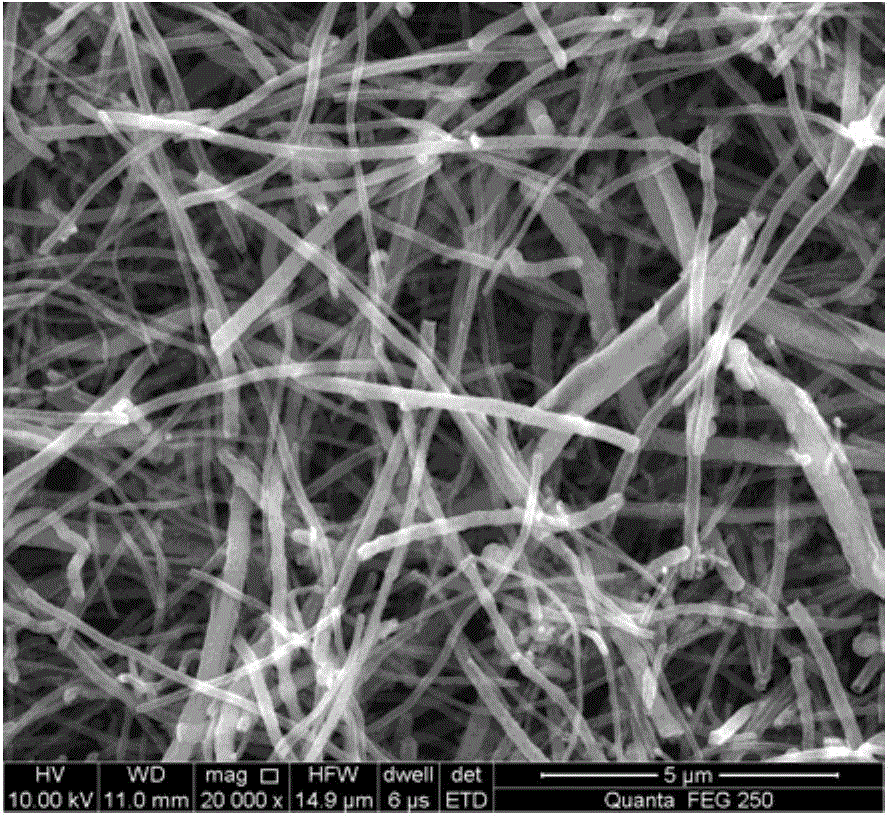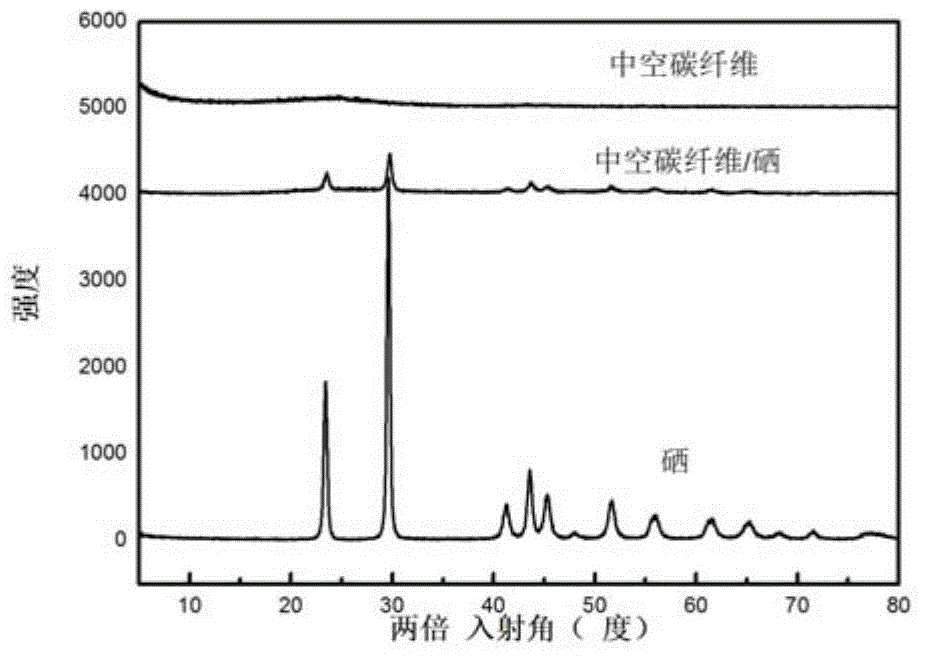Preparation method for flexible positive pole of lithium selenium battery
A battery and flexible technology, applied in battery electrodes, secondary batteries, circuits, etc., can solve problems such as the inability to effectively improve the shuttle effect of polyselenide in lithium-selenium batteries, and achieve easy implementation, mass production, and simple preparation methods. , the effect of improving utilization
- Summary
- Abstract
- Description
- Claims
- Application Information
AI Technical Summary
Problems solved by technology
Method used
Image
Examples
Embodiment 1
[0035] 0.18g of multi-walled carbon nanotubes (10nm in diameter and 200nm in length) and 0.02g of sodium alginate were thoroughly ground in a mortar, then an appropriate amount of ultrapure water was added for wet grinding, and then the slurry was mixed with a spatula Coated on the fixed diaphragm, dried in vacuum for 12 hours and then cut into appropriate size for later use.
[0036] Prepare a mixed solution of 50 mL of concentrated nitric acid and 150 mL of concentrated sulfuric acid, add 1 g of hollow carbon fibers (40 nm in diameter and 10 μm in length) into the solution, stir magnetically for 5 hours, filter the product and wash three times with deionized water and ethanol respectively to obtain Activated hollow carbon fibers. Take 0.6 g of the activated hollow carbon fiber and 0.4 g of selenium powder, and after fully grinding, heat the sample at 260° C. without air for 12 hours to obtain a hollow carbon fiber and selenium composite material.
[0037] Take 75 mg of holl...
Embodiment 2
[0046] 0.18g of multi-walled carbon nanotubes (10nm in diameter and 200nm in length) and 0.02g of sodium alginate were thoroughly ground in a mortar, then an appropriate amount of ultrapure water was added for wet grinding, and then the slurry was mixed with a spatula Coated on the fixed diaphragm, dried in vacuum for 12 hours and then cut into appropriate size for later use.
[0047] Prepare a mixed solution of 50 mL of concentrated nitric acid and 150 mL of concentrated sulfuric acid, add 1 g of hollow carbon fibers (40 nm in diameter and 10 μm in length) into the solution, stir magnetically for 5 hours, filter the product and wash three times with deionized water and ethanol respectively to obtain Activated hollow carbon fibers. Take 0.6 g of activated hollow carbon fiber and 0.4 g of selenium powder, and after fully grinding, heat the sample at 260° C. without air for 12 hours to obtain hollow carbon fiber and selenium composite material.
[0048] Take 100 mg of hollow ca...
Embodiment 3
[0051] 0.18g of multi-walled carbon nanotubes (10nm in diameter and 200nm in length) and 0.02g of sodium alginate were thoroughly ground in a mortar, then an appropriate amount of ultrapure water was added for wet grinding, and then the slurry was mixed with a spatula Coated on the fixed diaphragm, dried in vacuum for 12 hours and then cut into appropriate size for later use.
[0052] Prepare a mixed solution of 50 mL of concentrated nitric acid and 150 mL of concentrated sulfuric acid, add 1 g of hollow carbon fibers (40 nm in diameter and 10 μm in length) into the solution, stir magnetically for 5 hours, filter the product and wash three times with deionized water and ethanol respectively to obtain Activated hollow carbon fibers. Take 0.5 g of activated hollow carbon fiber and 0.5 g of selenium powder, and after fully grinding, heat the sample at 260° C. without air for 12 hours to obtain hollow carbon fiber and selenium composite material.
[0053] Take 60 mg of hollow car...
PUM
| Property | Measurement | Unit |
|---|---|---|
| Diameter | aaaaa | aaaaa |
| Length | aaaaa | aaaaa |
| Diameter | aaaaa | aaaaa |
Abstract
Description
Claims
Application Information
 Login to View More
Login to View More - R&D
- Intellectual Property
- Life Sciences
- Materials
- Tech Scout
- Unparalleled Data Quality
- Higher Quality Content
- 60% Fewer Hallucinations
Browse by: Latest US Patents, China's latest patents, Technical Efficacy Thesaurus, Application Domain, Technology Topic, Popular Technical Reports.
© 2025 PatSnap. All rights reserved.Legal|Privacy policy|Modern Slavery Act Transparency Statement|Sitemap|About US| Contact US: help@patsnap.com



